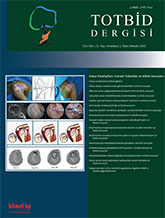
Hill-Sachs lesion is a compression fracture caused by anterior edge of the glenoid. It is frequently encountered in the presence of anterior shoulder instability, especially with the presence of recurrent dislocations. Treatment of Hill-Sachs lesion is very important in terms of recurrence after anterior shoulder instability. Treatment options can be listed as only arthroscopic Bankart repair (ABR), additionally remplissage procedure to ABR, and Latarjet procedure. Which treatment modality should be chosen is the primary determining factor for clinical and functional outcomes and recurrence rates after surgery. Therefore, understanding the concepts of `glenoid track`, `engaged` or `non-engaged HSL` and `on-track/offtrack lesion` is important for determining a treatment strategy. In the presence of appropriate surgical indications, satisfactory clinical results can be obtained with the combination of remplissage technique and arthroscopic Bankart repair. In addition, the limitation of movement that can be expected to occur after remplissage procedure is also at negligible levels. Combined treatment of remplissage and Arthroscopic Bankart repair provides lower instability recurrence rates compared to ABR alone and has similar recurrence rates with less morbidity and fewer complications than the Latarjet procedure.